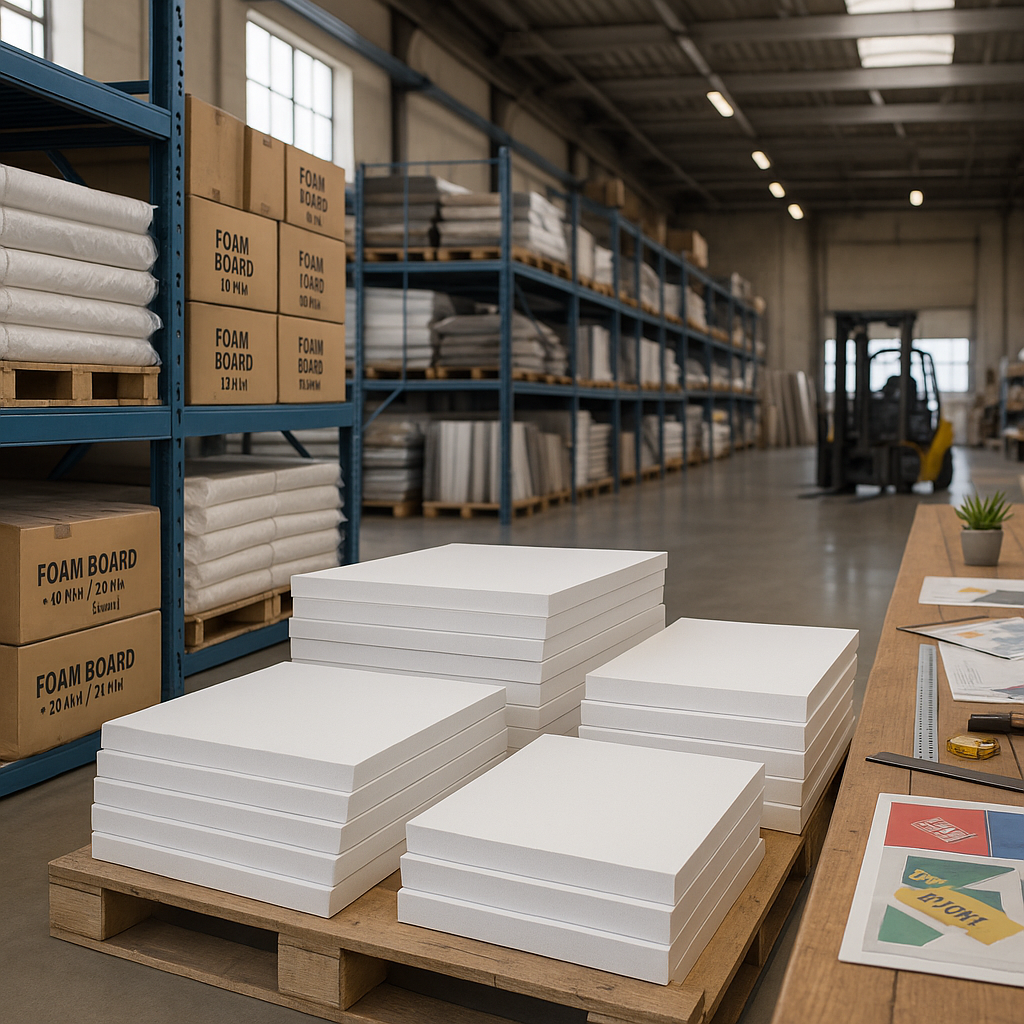PVC Foam Board for Furniture? Pros and Cons
PVC foam board is widely used in signage and display projects, but it has recently gained popularity among apartment dwellers and DIYers experimenting with furniture. Its lightweight and moisture-resistant properties make it appealing for compact spaces. However, its structural limitations must be understood before using it in home projects. In this article, we explore the benefits and drawbacks of using PVC foam board for furniture applications—and when it makes sense to use it.
Lightweight and Easy to Handle
PVC foam board is appreciated for being light and easy to work with. You can cut it with basic tools and join it using adhesives or screws. As a result, it’s ideal for wall-mounted shelving, light cabinetry, or decorative panels—especially in apartments where heavy materials are hard to maneuver.
Because of its foam-core composition, it doesn’t require power tools or complex joinery. This makes it a great entry-level material for first-time furniture builders or renters looking to make minor upgrades.
As explained in Jeewa Plastic’s blog on presentation materials, PVC foam boards are favored for lightweight projects thanks to their rigidity and flexibility (source).
Moisture Resistance Makes It Kitchen- and Bathroom-Friendly
One major reason for using PVC foam board in furniture is its resistance to moisture. It won’t warp, swell, or degrade when exposed to humidity, making it perfect for:
- Under-sink cabinets
- Bathroom storage units
- Kitchen drawer organizers
Additionally, PVC foam board is termite-resistant and suitable for coastal apartments or high-humidity interiors. Manufacturers often use foam board for wardrobe backs, partition panels, and as a base for laminated kitchen shutters.
Load-Bearing Limitations to Be Aware Of
While PVC foam board has clear advantages, it is not suitable for all furniture uses. It lacks the load-bearing capacity of plywood or hardwood. Unsupported long shelves bend under heavy loads, and their joints loosen over time.
To make it work, designs should incorporate support frames or edge reinforcement. Use foam board for vertical applications door panels, drawer fronts, or cabinetry infill instead of seating or tabletops.
Visual Finish and Custom Styling Options
Visually, PVC foam board has a smooth matte surface that is easy to finish. Many DIYers apply:
- Wood Grain-effect vinyl
- Laminate sheets
- Spray or roller paint with PVC-compatible coatings
Designers style it to mimic marble or timber because it resists moisture and holds finishes well. Jeewa Plastic notes that their foam boards are often paired with vinyl overlays or used for signage due to their adaptability.
When PVC Foam Board Makes Sense for Furniture
PVC foam board is ideal for certain types of furniture and shelving, especially where style, ease of use, and water resistance are priorities. Recommended applications include:
- Floating bathroom shelves
- Cabinet door panels
- Partition storage inside wardrobes
- Bedroom or under-bed organizers
- Light-duty display racks
You should choose more solid boards for seating, desks, or high-use surfaces to ensure long-term durability.
Where to Buy PVC Foam Boards in Sri Lanka
Jeewa Plastic offers high-quality PVC foam boards suitable for home projects. These are available in various thicknesses, making them ideal for vertical panels, decorative furniture elements, or shelving that requires minimal weight support.
Bulk pricing and custom dimensions are available, and their team can guide you based on your project’s structural needs.
PVC foam board provides a modern, lightweight alternative to traditional wood-based materials. Manufacturers don’t design it to support heavy loads; however, it provides excellent water resistance, pest protection, and easy customization. As a result, it is a strong choice for kitchen panels, bathroom furniture, and decorative shelving.To explore available options and choose the right foam board for your next home DIY project, visit Jeewa Plastic’s store or browse their product range online.
